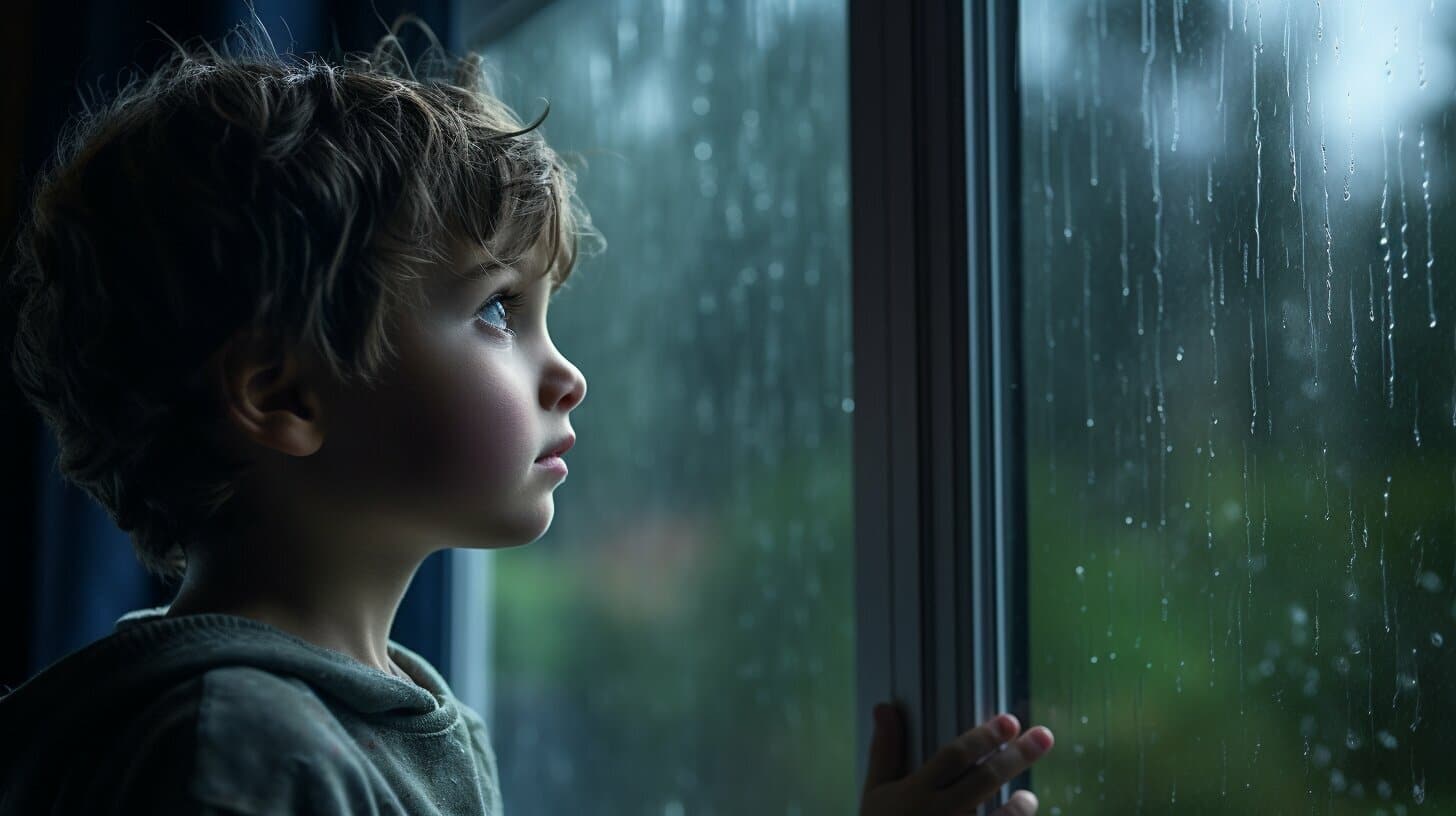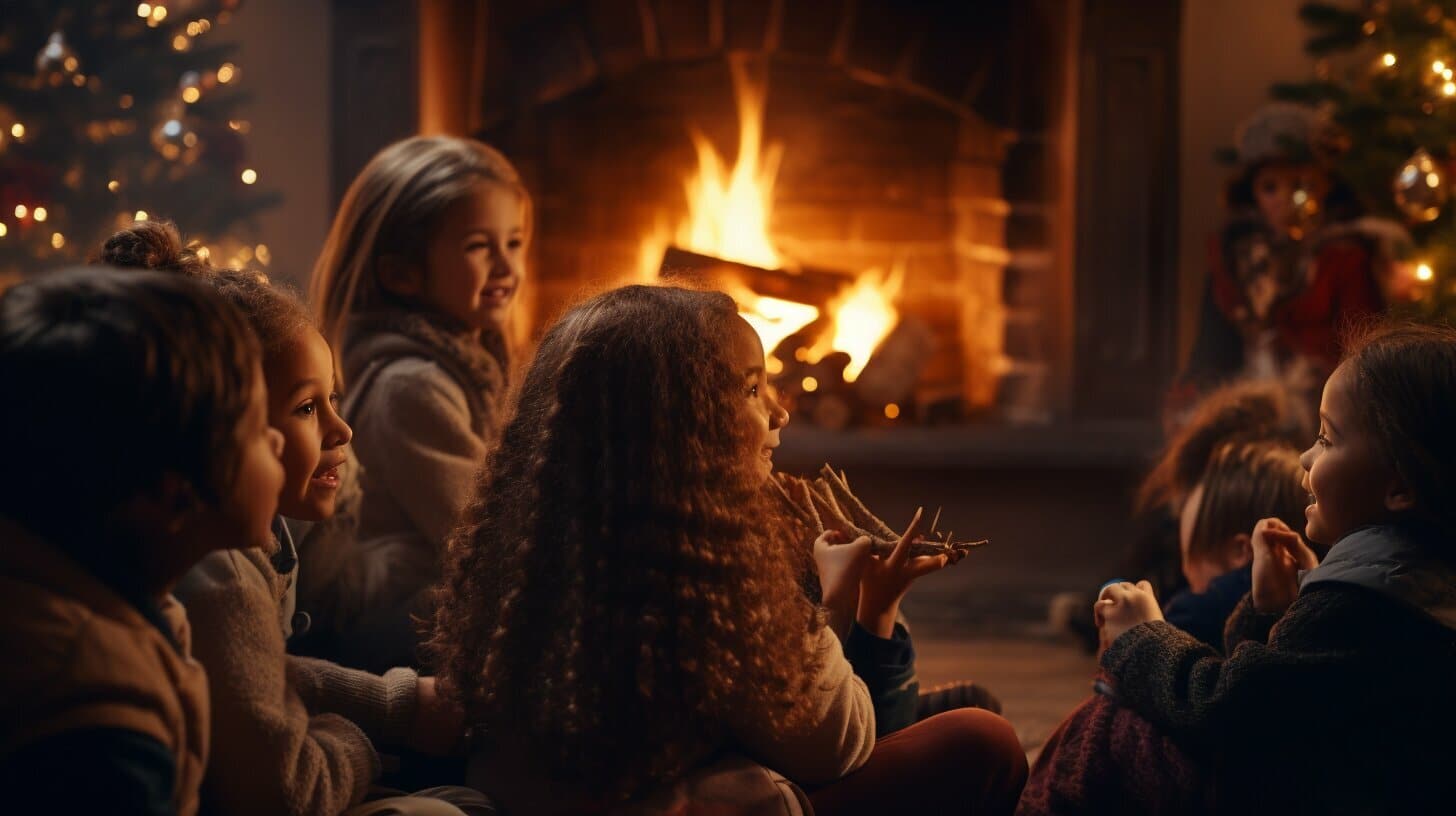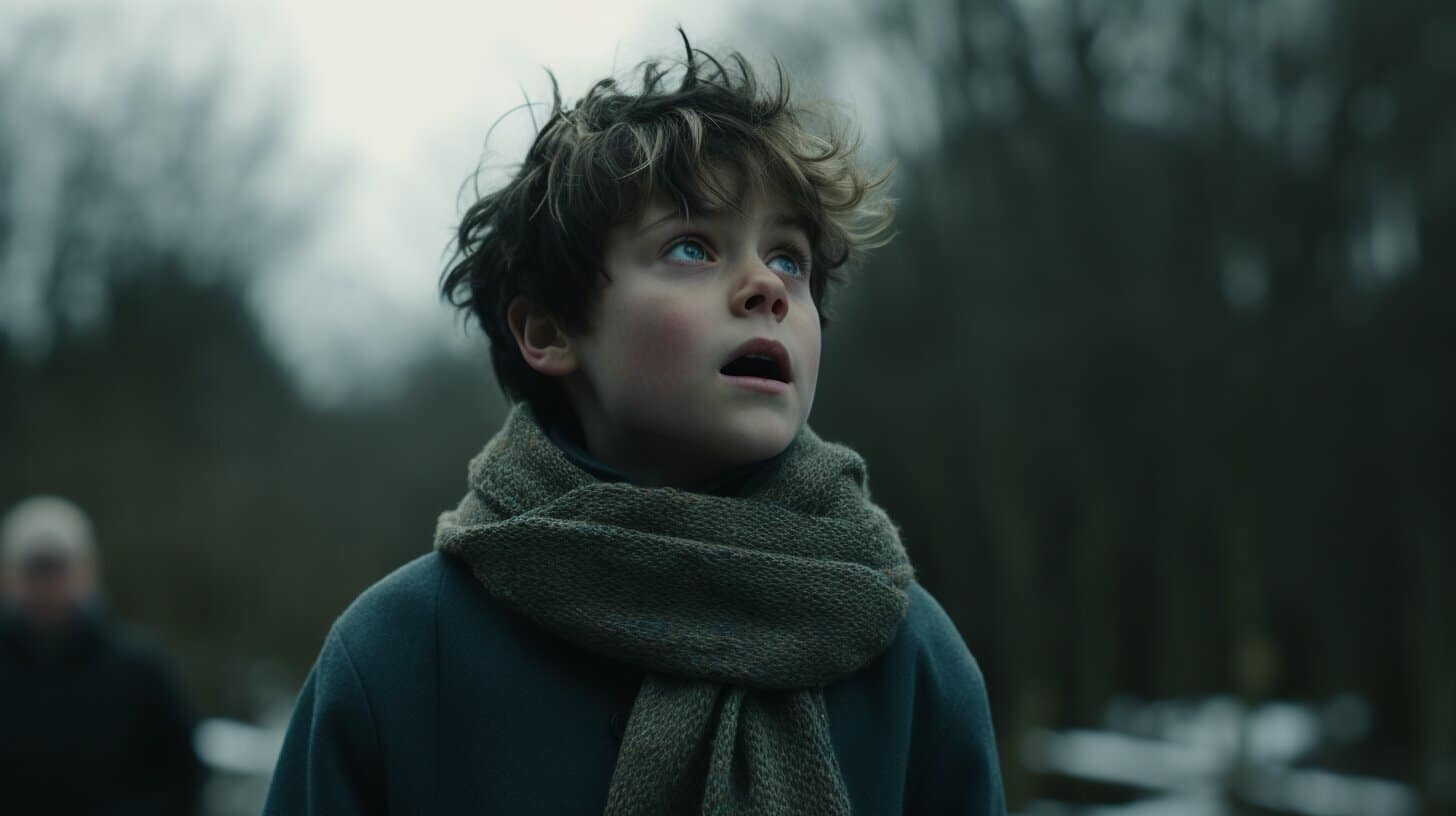Explaining weather phenomena to a child can be a challenging task. However, with the right approach and techniques, it can be an enjoyable and engaging learning experience. In this section, we will show you how to explain fog to your child using fun and relatable examples. By the end of this guide, your child will have a basic understanding of what fog is, where it comes from, and how it feels.
Key Takeaways
- Engage your child’s curiosity by using relatable examples to explain what fog is.
- Help your child understand where fog comes from and the different types of fog that exist.
- Encourage your child to explore and observe fog in real-life situations.
- Teach your child about safety precautions to take when encountering fog.
- Share interesting facts and stories about fog to spark your child’s interest in the topic.
What is Fog?
Before explaining fog to your child, it’s important to have a basic understanding of what it is. Fog is a type of weather condition that happens when tiny water droplets suspend in the air close to the ground. It looks like a thick cloud and can make it difficult to see things clearly.
For example, imagine you’re standing on a mountain and there’s a cloud hovering just above the ground. That cloud is actually fog!
It’s important to note that fog is not the same as mist. Mist is also made up of tiny water droplets in the air, but it’s not as thick as fog and doesn’t reduce visibility as much.
Now that you have a basic understanding of what fog is, it’s time to teach your child about this fascinating weather phenomenon!

Where Does Fog Come From?
Helping your child understand the origins of fog is important in teaching them about this weather phenomenon. Here are some simple explanations to help you explain where fog comes from to your child:
- Warm air meets cool air: When warm air passes over a cool surface, such as the ground, it cools and loses its ability to hold moisture. This causes the moisture to condense and form fog.
- Cold water vapor meets warm air: When cold water vapor meets warm air, it can form fog as well. This often occurs over bodies of water, such as lakes and oceans.
- Advection: This is a type of fog that forms when warm, moist air moves over a cool surface, such as a snowy field or a cool body of water. The moisture in the air condenses and forms a fog.
Help your child understand these concepts by using everyday examples. For instance, breathing on a cold day can create a visible fog, just as warm air passing over a cool surface can. You can also use visual aids, such as pictures or videos, to help illustrate the concept.
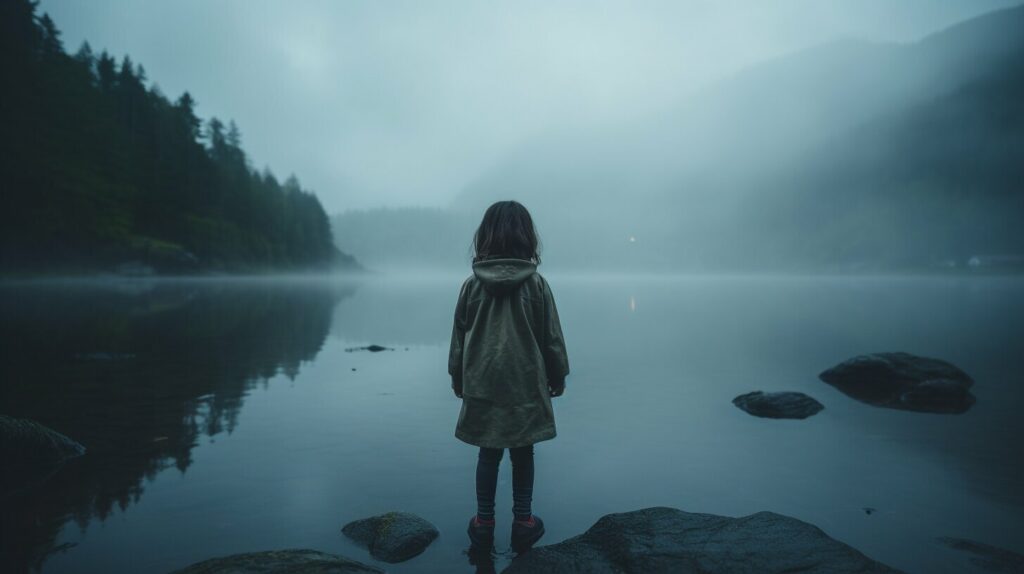
Remember to keep your explanations age-appropriate, making it easy for your child to understand and learn. By using relatable examples and visual aids, you can help your child develop an appreciation for this fascinating weather phenomenon.
Different Types of Fog
Now that your child has a basic understanding of fog, let’s explore different types of fog. There are three main types of fog: radiation fog, advection fog, and upslope fog.
| Type of Fog | Description |
|---|---|
| Radiation Fog | Forms on clear nights when the earth’s surface cools quickly, causing the air near the ground to cool and reach its dew point. This type of fog is most common in the fall and winter. |
| Advection Fog | Forms when warm, moist air moves horizontally over a cool surface. This type of fog is common along coastal areas and can be persistent for days. |
| Upslope Fog | Forms when warm, moist air is forced up a hill or mountain, where it cools and reaches its dew point. This type of fog can be common in mountainous areas, especially during the winter. |
Help your child understand that different types of fog form due to different weather conditions and geographic features. For example, radiation fog often occurs in valleys and low-lying areas, while advection fog is common in coastal regions. Use visuals or drawings to make it easier for your child to grasp the concept.

Fun Fact: Did you know that fog can also form in cities due to air pollution? This is called “smog fog”.
How Does Fog Feel?
Exploring weather phenomena with your child can be a great way to engage their curiosity. When it comes to fog, it’s not just what it looks like that makes it interesting. Here’s how to help your child understand how fog feels.

Fog is made up of tiny water droplets that can make everything feel damp and cool. When you step outside on a foggy day, you might feel a thin layer of moisture on your skin, and your hair might become damp. It can also feel like the temperature has dropped a few degrees.
It’s important to remember that not all fog feels the same. Sometimes, fog can feel thick and heavy, like a blanket that has been draped over everything. Other times, it can feel light and wispy, like a misty cloud that gently brushes against your cheeks.
I love when it’s foggy outside! It feels like you’re walking in a dream. Everything is quiet and still, and you can hear sounds that you might not normally notice.” – Sophia, age 8
Encourage your child to experience the sensation of fog for themselves by going on a walk or hike on a foggy day. They can pay attention to how the fog feels on their skin, and how it affects the environment around them.
Foggy Day Activities
Learning about fog can be fun and interactive! Here are some engaging activities to do with your child on a foggy day:
- Observe the fog: Go outside and take a walk in the fog. Encourage your child to observe how it looks and feels. Are there any interesting shapes or patterns in the fog?
- Draw the fog: Give your child paper and pencils or markers. Let them draw what they see in the foggy atmosphere.
- Write a story: Encourage your child to write a story inspired by the fog. Help them develop a plot and characters that interact with the foggy environment.
- Play a game: Teach your child games that involve finding things in the fog, such as “I Spy” or “Hide and Seek.
Remember that safety is important, so make sure to supervise your child during these activities. Use bright or reflective clothing when outside, and avoid crossing roads or intersections during foggy conditions.
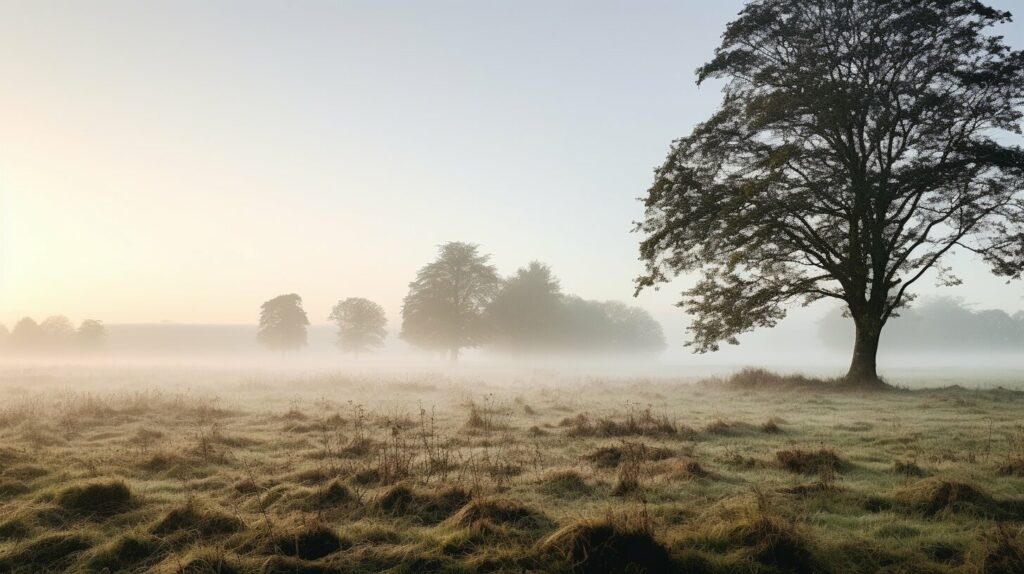
How to Stay Safe in Fog
When encountering fog, it’s important to take the necessary safety precautions. Here are some tips to keep in mind:
- Wear bright or reflective clothing: Since fog can reduce visibility, it’s essential to wear bright or reflective clothing to remain visible to drivers and other people.
- Stay close to an adult: When outside, always stay close to an adult to ensure your safety.
- Use caution when crossing roads: Fog can make it difficult to see oncoming traffic, so be sure to use caution when crossing roads or intersections.
By following these simple safety tips, you can enjoy the beauty of fog while staying safe and sound.

Fun Facts About Fog
Did you know that fog is a common feature in many famous movies and TV shows, such as Sherlock Holmes and Harry Potter? Fog creates an eerie and mysterious atmosphere that adds to the storytelling.

Fog is often seen in coastal areas or near bodies of water, such as the iconic Golden Gate Bridge in San Francisco. It can also be found in cities during the early hours of the morning, creating a beautiful and atmospheric backdrop for early risers.
Another interesting fact about fog is that it can change colors, depending on the time of day and the angle of the sun. In the morning, fog can appear light and white, while in the evening, it can take on a pink or orange hue.
“Fog is a cloud that touches the ground.” – William S. Burroughs
Fog is a fascinating weather phenomenon that adds a layer of intrigue to our surroundings. Share these fun facts with your child and encourage them to observe and appreciate the beauty of fog.
Fog in Stories and Myths
Exploring stories and myths that feature fog can help your child understand the fascination and intrigue that surrounds this weather phenomenon. Throughout history, fog has been used as a narrative tool to create a sense of mystery and foreboding.
The Hound of the Baskervilles by Arthur Conan Doyle features a spooky scene of dense fog on the moor, which adds to the suspense and eeriness of the story. In Macbeth by William Shakespeare, fog is used to represent the confusion and chaos of battle.
Some myths also feature fog, such as the ancient Greek myth of the god of the sea, Poseidon, who often used fog to conceal himself and his actions. Fog can also be seen as a representation of the unknown and unseen, as it can obscure our vision and make it difficult to see what lies ahead.
By sharing these examples with your child, you can help them appreciate the role of fog in storytelling and in our collective imagination.
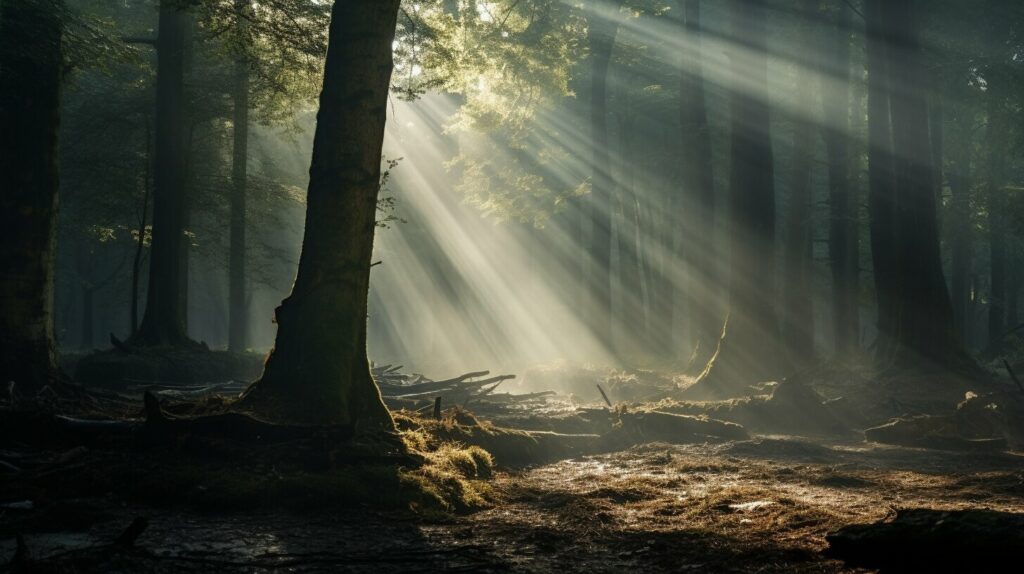
Exploring Real-Life Fog
Exploring fog in real-life can be a fun and educational experience for your child. Take advantage of the next foggy day to go outside together and observe the fog’s characteristics. Talk about what you notice, such as how the fog moves or how it interacts with the environment around you.
You can also encourage your child to use their senses and describe how the fog feels. Is it cool or warm? Can they feel the moisture in the air?
Don’t forget to take some photos or draw pictures of the fog to commemorate the experience. This is a great opportunity to spark your child’s creativity and imagination, and also to teach them about weather phenomena.
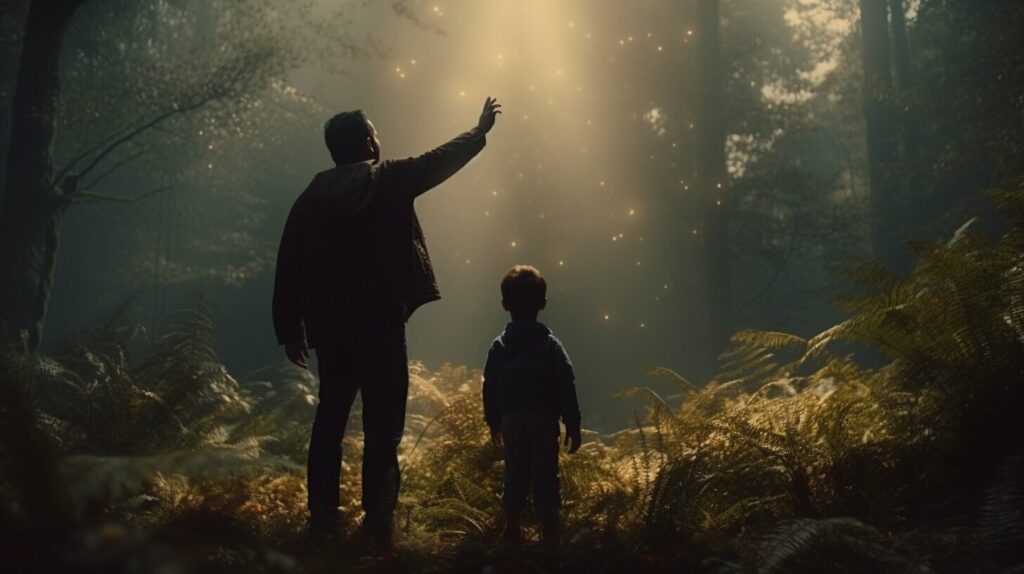
Helping Your Child Understand Fog
Teaching your child about the weather can be a fun and rewarding experience. By using engaging and simple techniques, you can help them understand weather phenomena like fog. Here are some tips to make the learning process enjoyable for both you and your child:
Engage their curiosity
Children are naturally curious, so use that to your advantage. Ask them if they have ever seen fog or what they think it might be. Use fun and relatable examples to capture their interest. For example, if your child has ever blown on a window on a cold day and seen the foggy glass, explain how that is similar to fog.
Use relatable examples
When explaining fog, it’s important to use relatable examples that your child can understand. Explain that it’s like a cloud that sits close to the ground, and can make it difficult to see things clearly. You can also mention how it can feel damp and cool, or even eerie or mysterious, especially when visibility is low.
Encourage real-life exploration
The best way to help your child understand fog is to let them explore it in real life. Whenever possible, go outside together on foggy days and encourage them to observe the fog’s characteristics. Talk about what they notice, such as how the fog moves or how it interacts with the environment around them.
Keep the explanations simple and age-appropriate
Remember to keep your explanations simple and tailored to your child’s age and understanding level. Use clear language and avoid technical terms that might be confusing. By making the learning process enjoyable and easy to understand, your child will be more likely to retain the information and develop a curiosity for the world around them.
With these fun and easy techniques, you can help your child understand and appreciate fog. By engaging their curiosity, using relatable examples, and encouraging real-life exploration, you can make the learning process enjoyable and rewarding.
Can the Same Techniques Be Used to Explain Empathy to a Child as Explaining Fog?
Explaining empathy to a child can be approached similarly to explaining fog. Just as fog is a mist that covers everything, empathy is the ability to understand and share another person’s feelings. By using relatable examples and emphasizing the importance of understanding how others feel, we can help children grasp the concept of explaining empathy to a child in a way that is meaningful and relatable to their own experiences.
FAQ
Q: How do I explain fog to my child?
A: Start by giving your child a basic understanding of fog. Explain that fog is a type of weather condition that happens when tiny water droplets suspend in the air close to the ground. It looks like a thick cloud and can make it difficult to see things clearly.
Q: Where does fog come from?
A: Fog often forms when the air near the ground becomes cool and meets warmer air above. This causes the water vapor in the air to condense into tiny water droplets, creating fog. For example, breathing on a cold day creates a visible fog.
Q: What are the different types of fog?
A: There are different types of fog, such as radiation fog, advection fog, and upslope fog. These types of fog form due to different weather conditions and geographic features. Visuals or drawings can help your child understand these concepts better.
Q: How does fog feel?
A: Fog is made up of tiny water droplets that can make everything feel damp and cool. Sometimes, fog can feel eerie or mysterious, especially when visibility is low.
Q: What can we do on a foggy day?
A: On foggy days, you can engage in activities that help your child observe how fog affects the environment and nature around them. They can also enjoy creative activities like drawing or writing stories inspired by the foggy atmosphere.
Q: How can we stay safe in fog?
A: When encountering fog, it’s important to wear bright or reflective clothing to increase visibility. Stay close to an adult and use caution when crossing roads or intersections during foggy conditions.
Q: Do you have any fun facts about fog?
A: Fog is often seen in coastal areas or near bodies of water. It is also featured in famous landmarks and movies, adding to its mystique.
Q: How is fog depicted in stories and myths?
A: Fog is often portrayed as a mysterious or magical element in stories, myths, and fairy tales. Share a favorite story or myth with your child that features fog.
Q: How can we explore real-life fog?
A: Whenever possible, go outside with your child on foggy days and encourage them to observe the fog’s characteristics. Talk about what they notice, such as how the fog moves or how it interacts with the environment around them.
Q: How can I help my child understand fog?
A: Use fun and easy techniques, engaging their curiosity and using relatable examples. Encourage real-life exploration and keep the explanations simple and age-appropriate, making the learning process enjoyable for both you and your child.

